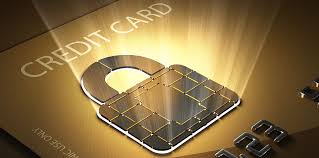Common Types of Bank Loans
There are a number of types of institutions that offer small business loans, although each type of lender may be better suited to different lending situations.
Banks include traditional savings banks, savings and loans, and commercial banks are generally the first place small business owners think of when looking for institutional financing. Credit unions can offer generous terms to their members, but make mostly consumer loans. Consumer finance companies may be willing to make higher-interest loans to higher-risk borrowers.
Commercial finance companies may be worth considering especially if you need a loan for inventory or equipment purchases.
There are two major characteristics that vary among bank loans: the term of the loan and the security or collateral required to get the loan.
1. Loan term. The “term” of the loan refers to the length of time you have to repay the debt. Debt financing can be either long-term or short-term. Long-term debt financing is commonly used to purchase,improve, or expand fixed assets such as your plant, facilities, major equipment, and real estate. If you are acquiring an asset with the loan proceeds, you will ordinarily want to match the length of the loan with the useful life of the asset. Short-term debt is often used to raise cash for cyclical inventory needs, accounts payable, and working capital.
2. Secured or unsecured debt. Debt financing can also be secured or unsecured. A secured loan is a promise to pay a debt, where the promise is “secured” by granting the creditor an interest in specific property (collateral) of the debtor. If the debtor defaults on the loan, the creditor can recoup the money by seizing and liquidating the specific property used for collateral on the debt for startup small businesses, lenders will usually require that both long- and short-term loans be secured with adequate collateral.
Because the value of pledged collateral is critical to a secured lender, loan conditions and covenants, such as insurance coverage, are always required of a borrower. You can also expect a lender to minimize its risk by conservatively valuing your collateral and by loaning only a percentage of its appraised value. The maximum loan amount, compared to the value of the collateral, is known as the loan-to-value ratio.
A lender might be willing to loan only 75 percent of the value of new commercial equipment. For example, If the equipment was valued at $100,000, it could serve as collateral for a loan of approximately $75,000.
An unsecured loan is also a promise to pay a debt. Unlike a secured loan, the promise is not supported by granting the creditor an interest in any specific property. The lender is relying upon the creditworthiness and reputation of the borrower to repay the obligation. An example of an unsecured loan is a revolving consumer credit card such as VISA and Mastercard. Sometimes, working capital lines of credit are also unsecured.
If the borrower defaults on an unsecured loan, the creditor has no priority claim against any particular property of the borrower. The creditor can try to obtain just a money judgment against the borrower. Until a small business has an established credit history, it cannot usually get unsecured loans because of the business’s risk.
3. Specific types of bank loans. In addition to consumer loans and mortgages, the most common types of loans given by banks to startup and emerging small businesses are:
- working capital lines of credit for the ongoing cash needs of the business
- credit cards which has a higher-interest
- unsecured revolving credit which are short-term commercial loans for one to three years
- longer-term commercial loans: generally secured by real estate or other major assets
- equipment leasing for assets you don’t want to buy outright
- letters of credit for businesses engaged in international trade
اكتشاف المزيد من استشارات اون لاين
اشترك للحصول على أحدث التدوينات المرسلة إلى بريدك الإلكتروني.





